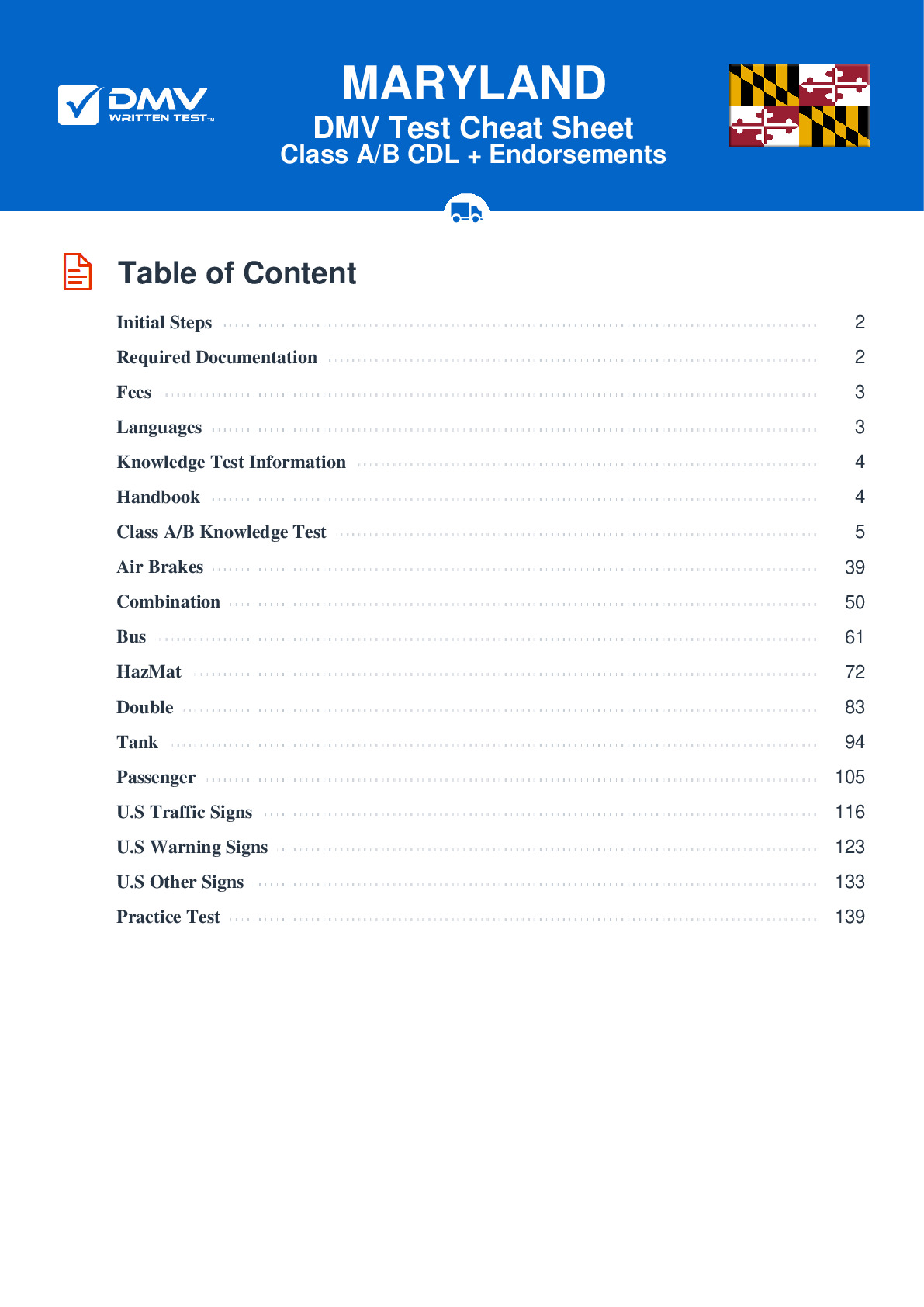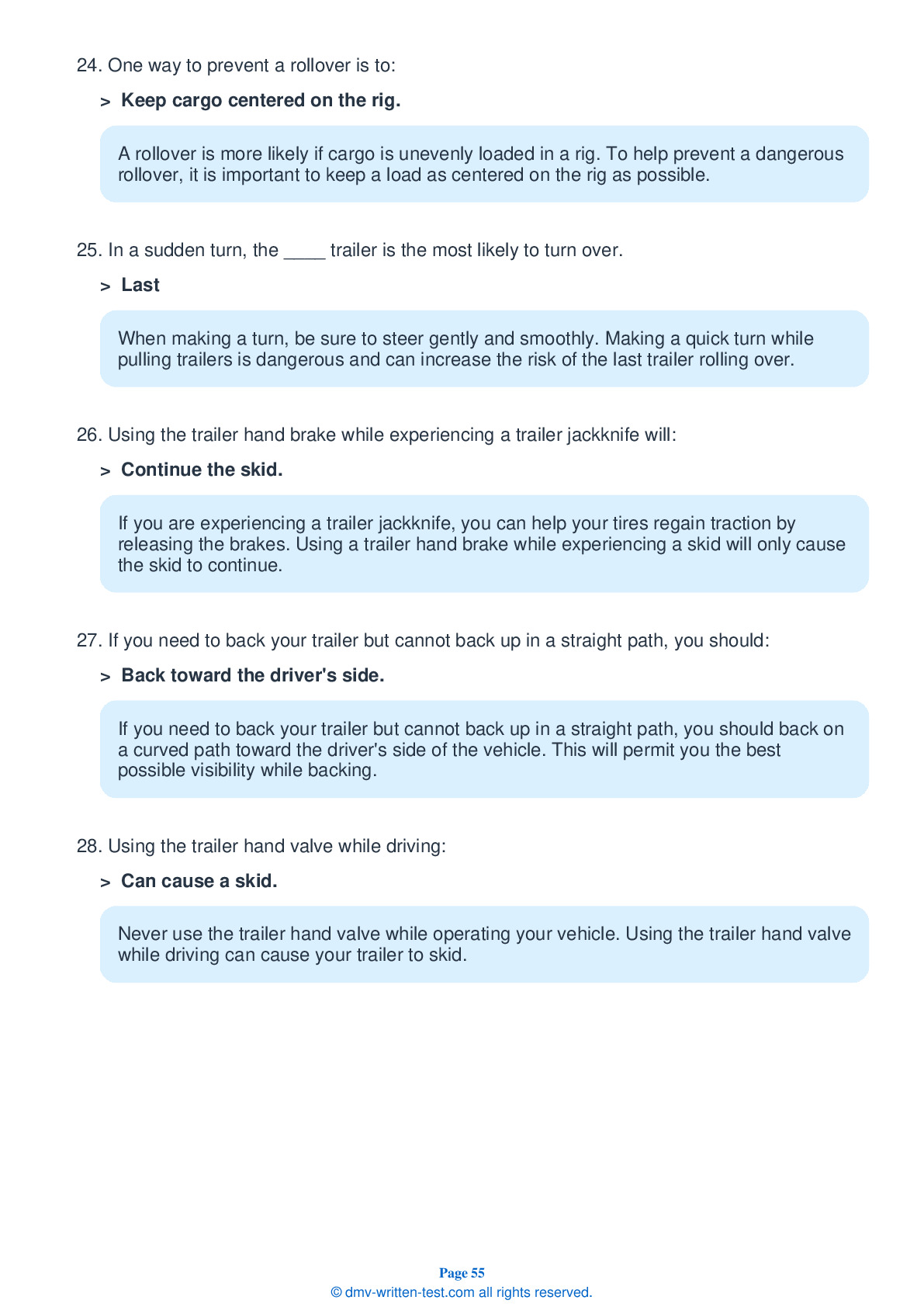Air Brakes
This endorsement is required for driving a vehicle with air brakes. To receive this endorsement, applicants must pass a written test. The test consists of 25 multiple choice questions. Each question has three or four answer choices. To pass, the applicant must answer at least 20 questions correctly. Test questions come from the Maryland Commercial Driver Guide. Questions come from the chapter covering: Air Brakes. The Air Brakes endorsement may be used with the Class A, B or C CDL.
Number of Question
Passing Score
7. What is removed when an air tank is drained?
Explanation
In an air brake system, the air storage tanks are equipped with drains to allow water and compressor oil to be removed. The water and oil can damage the brakes if left to accumulate in the system.
8. What must be on an air tank in an air-braked vehicle?
Explanation
All air tanks on air-braked vehicles must have one-way check valves located between the air compressor and the first reservoir. This prevents air from flowing out in the event of a leak.
9. In a dual air brake system, air pressure should build from 85 to 100 psi within ____ seconds.
Explanation
When inspecting a vehicle with a dual air brake system, you should wait for air pressure to build from 85 to 100 psi in both the primary and secondary systems. This should take about 45 seconds.
10. What should happen if the air pressure in the air brake system tanks falls below 60 psi?
Explanation
On vehicles with air brakes, a low air pressure warning signal will come on if the pressure in the air tanks falls below 60 psi. On large buses, the signal may activate at 80 to 85 psi.
11. In a vehicle with dual parking control valves, once air pressure is lost and the spring brakes come on:
Explanation
In a vehicle with dual parking control valves, there is a separate air tank that can be used to temporarily release the spring brakes if they have been activated due to low air pressure. Pushing in the proper control will release the spring brakes for a short period of time, allowing the driver to move the vehicle in an emergency.
12. The parking brake in a newer vehicle is applied by:
Explanation




